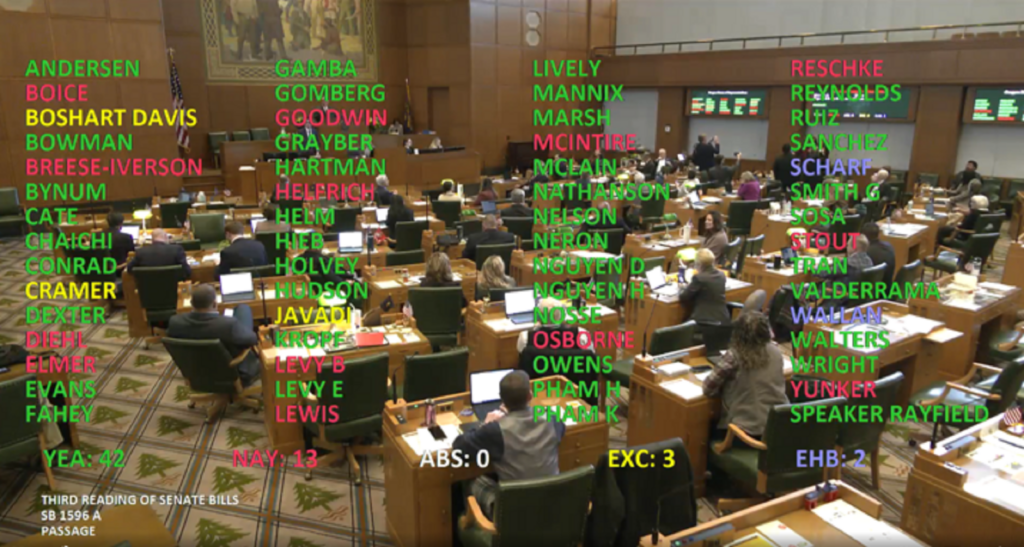Measure, first to restrict anti-repair uses of parts pairing, heads to the governor
SALEM, Ore. — Oregon on Monday became the fourth state in the country to pass Right to Repair legislation for consumer devices, including appliances, laptops and cell phones. The state House passed Oregon’s Right to Repair Act (SB 1596) by a 42 to 13 margin. The bill passed the state Senate on Feb. 20. Now, it goes to Gov. Tina Kotek, who has five days after it gets to her desk to sign it into law.
The legislation requires manufacturers to make repair more accessible by providing open access to the parts, tools and information used to fix things, many of which manufacturers are currently restricting to “authorized” service centers. Oregon’s bill is the first to ban manufacturers from using software to prevent technicians from fully installing spare parts, a practice called “parts pairing.”
“The Right to Repair keeps getting stronger. Oregon has passed the best bill yet,” said PIRG Right to Repair Campaign Senior Director Nathan Proctor. “By keeping products running and off the scrap heap, repair cuts waste and saves consumers money. People are tired of not being able to fix things. Lawmakers have gotten the message and, in turn, are sending that message to the manufacturers.”
Parts pairing has become an increasing barrier to independent repair. According to a test by iFixit, after you switch the screens from two identical iPhone 15s, the front-facing camera, face ID unlocking feature and auto-brightness stop working. The phone recognizes each part connected to it and restricts the ability to replace parts without a proprietary process to restore functionality.
Apple defended this practice, giving rare public testimony on why they use parts pairing. Lawmakers were not convinced, so they overwhelmingly passed this first-ever ban against anti-repair uses of parts pairing.
“I’m beyond proud of my home state for passing the strongest-yet electronics Right to Repair bill,” said Kyle Wiens, the CEO of iFixit. “By applying to most products made after 2015, this law will open up repair for the things Oregonians need to get fixed right now. And by limiting the repair-restricting practices of parts pairing, it protects fixing for years to come. We won’t stop fighting until everyone, everywhere has these rights.”
In addition to support from consumer and environmental groups, the measure had the backing of a number of businesses, including the Technology Association of Oregon, 89 local repair companies and Google, who testified for the bill.
“Oregon’s Right to Repair Act is about saving Oregonians money and supporting small business growth in Oregon. It provides positive environmental action by reducing e-waste, cutting pollution by manufacturing less waste and creating an after-market inventory of products to close the digital divide across our state”, said Senator Janeen Sollman, the Chief Sponsor in the Senate. “Oregonians deserve to have affordable and sustainable options for repairing their electronics instead of throwing them away or replacing them.”
The legislation covers consumer electronics and appliances, with the exception of video game consoles, heating and air conditioning units and vehicles. It applies to all covered electronics made after 2015, except cell phones, where it covers all devices made after July, 2021.
“Oregon improves on Right to Repair laws in California, Minnesota and New York by making sure that consumers have the choice of buying new parts, used parts or third party parts for their gadgets and gizmos,” noted Repair.org Executive Director Gay Gordon-Byrne.
“If it sounds like common sense, that’s because it is: Just let people fix their stuff!” concluded Proctor.

The tally from the final passage of Oregon’s Right to Repair billPhoto by OregonLegislature.gov | Public Domain